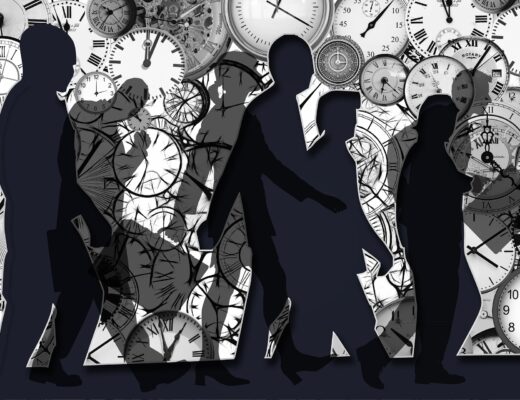As spoopy season feels fully underway (once I have to have socks on in the house, I know autumn is officially here), I’ve decided to spend the next few posts on character movement studies of characters or creatures that fit snugly into October.
In looking back at the character movement studies I’ve done so far on this blog, it turns out I’ve studied and written about quite a few ‘spooky’ characters. Actually, every single one. NBC Hannibals Red Dragon, Anjelica Huston’s Morticia Addams, The Descendants Crawlers, and Taika Waititi’s Viago from What We Do in the Shadows.
What can I say?
I’m constantly drawn to these kinds of characters.
Real quick, If you’re not familiar with my blog, firstly, welcome!
Secondly, I’d suggest checking out my intro post about the work of Rudolf Laban, as I use his process and notation system as my foundation for how I break down movement.
Let’s talk zombies
Zombies, whether we’re fans or not, aren’t going anywhere. At least not anytime soon.
Movies and tv shows continue to pour out these creatures, with their shred of humanity shaken up and stirred with a taste for brains and flesh.
I could easily write a dozen blog posts about the different kinds of zombies that have appeared across the span of entertainment, and perhaps I will someday.
Now, to be a zombie takes dedication to character movement, body awareness with a huge dash of creepy.
I mean, The Walking Dead puts actors through what they call Zombie School. Which is a series of auditions to find what performances would best fit their world.
More traditional zombies, the modern zombie as we know it was first created by George Romero, are shamblers.
Think of movies/shows like Dawn of the Dead (the original), The Walking Dead, and Shaun of the Dead. These zombies can’t run. Instead, they meander towards their target.
From a movement perspective, this is a very controlled yet sustained kind of movement.
On top of this, there’s an element of flow to them. Their bodies are continuously moving, one micro-movement stacked upon the other. So, unless they’re inhibited by some sort of external force that keeps them from moving forward, they find a way to flow over keep moving towards their target.
Sure, there are jump scares, but the movements themselves are more continuous, and though they may be reaching out for an unsuspecting human, there’s often an indirect nature about them.
Once you get used to them, they really only pose a threat as a horde or if you get yourself in a tricky situation that’s more dictated by your environment, such as wading through water, dead ends, etc.
There is an art to being this kind of zombie, where you have to be aware of how your body is moving at all times, specifically your speed.
These movements are sustained, indirect, and flowing.
A quick note on running zombies
There are also running zombies, of course, like in World War Z (where a great deal of the zombie work was CGI) and 28 Days later. These zombies have a quick directness to them, but there’s very little attention to detail.
In my opinion, from a movement perspective, what makes them scary is simply how quickly they can overwhelm you.
And while, of course, there are a few actor movement performances, say, in World War Z, that show irregular, jarring movements, it’s almost as though we don’t get to really enjoy it.
I’m thinking of the few who transform in the street at the beginning of the film. For me the issue was that the camera moves around so quickly, we miss a great deal of the artwork behind those contorted movements.
Also, with the release of Army of the Dead, we have a whole new breed of zombies entering the playing field, but this post isn’t about them.
Train to Busan zombies
But, what I really want to dive into, is the zombies in the 2016 Korean film Train to Busan.
So, what makes the zombies in Train to Busan different?
If the zombies we’re more used to are shamblers, with their meandering, indirect, sustained movements, the zombies from Train to Busan are sudden, direct, and bound.
The choreographer and movement coordinator for Train to Busan is dancer Jeon Young. He’s a member of Centipedz, the only bone-breaking street dance group in Korea.
A brief background on bone-breaking
Bone-breaking originated in Brooklyn, NY, and is a rhythmic contortionist movement style of street dance.
It falls under the category of flexing, which has its roots in a Jamaican style of street dance called bruk-up, meant to resemble broken limbs.
It’s gained a lot of traction in certain circles, and it can be pretty cringe-worthy.
It’s like seeing a car crash and not being able to look away kind of thing. But the skillset, practice, and dedication that goes into it is absolutely stunning.
Check the link here for a fantastic youtube vid demonstrating the style. But, be aware it may be challenging to watch.
I hope it goes without saying, if you’ve got an interest in working with the dance style of bone-breaking or flexing, please take care of yourself and be aware of your body’s limits.
Back to Train to Busan
So, what Jeon brought to the table for Train to Busan, was working with actors and teaching them techniques they could practice, often for months before shooting, so that each actor could discover their own unique style.
The seizure-like, erratic movements are fully connected. The control over their sometimes flailing limbs while appearing to have no control is incredible.
Something as ‘simple’ as one zombie being slammed into a wall is fascinating to watch. Their hand flips about awkwardly, or they fall over and land on their face, to only roll up and attack.
Their movements appear incredibly inhuman, and to me, it’s what makes them as uniquely beautiful as they are horrifying.
Each zombie has its default mode. When seeing prey, layers the Laban building blocks of sudden, direct, and bound.
One specific performance, though brief, continues to blow me away. “Actor Woo Do-im, whose character is part of the train crew and is the second person in the film to get infected, trained for four to five months for her brief but powerful appearance in the beginning of the film.” Her controlled, bound, and sudden sporadic, and lack of control is incredibly precise.
And for anyone who’s acted drunk can attest, playing a state of altered being that you are not, in fact, experiencing can be incredibly difficult.
I’ll link the isolated scene here. But, if you haven’t seen the entire film and are intrigued, I can’t recommend it enough.
But I will also warn, it’s a film full of all the feels.
Surrounded by zombies
As a character movement actor, thinking about how you’d break down playing a zombie is a wonderful exercise.
I don’t believe that you have to be a fan of zombies or spooky things to give it a go and play a little. Who knows what you may discover. And, hey, you may end up finding yourself in a school for zombies somewhere down the line.
So, which style appeals to you more?
Shamblers who operate more sustained, slightly in-direct movements with a lot of flow?
Or…
The bone-breaking, frenzied, bound, and direct zombies of Train to Busan?
(Oh, and for those interested in seeing more work of Jeon Young, he also was the choreographer/movement coordinator of the Korean series: Kingdom. ( Also about zombies)
Happy shambling/frenzied staggering, and please don’t bite your neighbor. 😉





Jeffrey Machado
October 9, 2021 at 4:38 amGive me the shamblers. At least you have a chance of outrunning them.
Also, eeewwww.
Katherine
October 15, 2021 at 7:04 pmAgreed, I prefer shamblers too. Ewww indeed, and for me a dash of awe-inspiring. 🙂